
It’s a bit harder to put this past year in a tidy descriptive box than it has been the past few years. Probably the simplest description would be: The same, but less so.
Last year I did a great job of leaning into exercise as a way to cope with the pandemic. This year started with me feeling like I could imagine that the pandemic would end, and I was focusing of all the new things I could do, once I could spend time with other people—rock climbing, parkour, fencing, historical European martial arts (i.e. sword fighting), etc.
Except then the pandemic didn’t end, and I was left to carry on as best I could with last year’s exercises. I did okay, but not as well as I had done.
In fact, I’m perfectly pleased with the way I maintained my capabilities. Late last year I checked and documented that I’d pretty much accomplished the baseline goals that I’d set for myself (see Five years of parkour strength training). I just checked again, and I’ve not backslid on those.
Last year I didn’t even think about setting new baseline goals, because my plan had been to move on from these solo training goals to training with other actual people. This year I’ve felt like I needed to at least think about it, but so far I’m not feeling it. I do want to recover the ability to do a few pull ups (again!), but that’s about the only physical benchmark of that sort where I feel like I want or need specific improvement.
It’s not that I’m a perfect physical specimen; it’s just that I don’t have much attachment to being able to squat this much weight or deadlift that much. I want to be strong enough to pick up something heavy and carry it a reasonable distance, but I don’t feel much need to put specific numbers on that weight or that distance.
I wrote a day or two ago about how I gradually shifted to more running and less lifting, which has been great. But in the middle of the year I spent some months doing less of everything—I had a minor medical issue in the spring, then we took a vacation, then I went to visit my dad, then Jackie had her hip replacement (meaning that I had to pretty much take over running the household for a few weeks). I did okay in terms of not backsliding too much, but I didn’t make much forward progress, and it has only been in the last six weeks or so that I’m really getting back to doing what I want to do.
So, where to go from here? I guess I want to:
- Continue to emphasize running, moving from two runs a week to three.
- Let the lifting sessions settle in at just two a week, but amp up the intensity.
- Get back to including a HIIT session every week.
- Take Jackie for a walk or hike every single time she wants to go, even if it means delaying or canceling a workout.
I’ll aim to do something just like that in January and February. Along about March or April I will want to do the Superhero workout that I couldn’t do last year—that’ll be a brief interruption in my shift back to more running and less lifting, but just for eight or nine weeks. In mid-summer we have a plan for a hiking vacation in North Carolina, so in May and June we’ll want to gradually boost the amount and speed of our walks, and be sure to include plenty of hikes on trails, and to get in as much elevation change as possible in Central Illinois. I’ve got a couple more trips planned for late summer (assuming the pandemic allows), including attending WorldCon, but it’s only the hiking trip that will have much influence on my movement strategy.
So, I guess I have a plan.

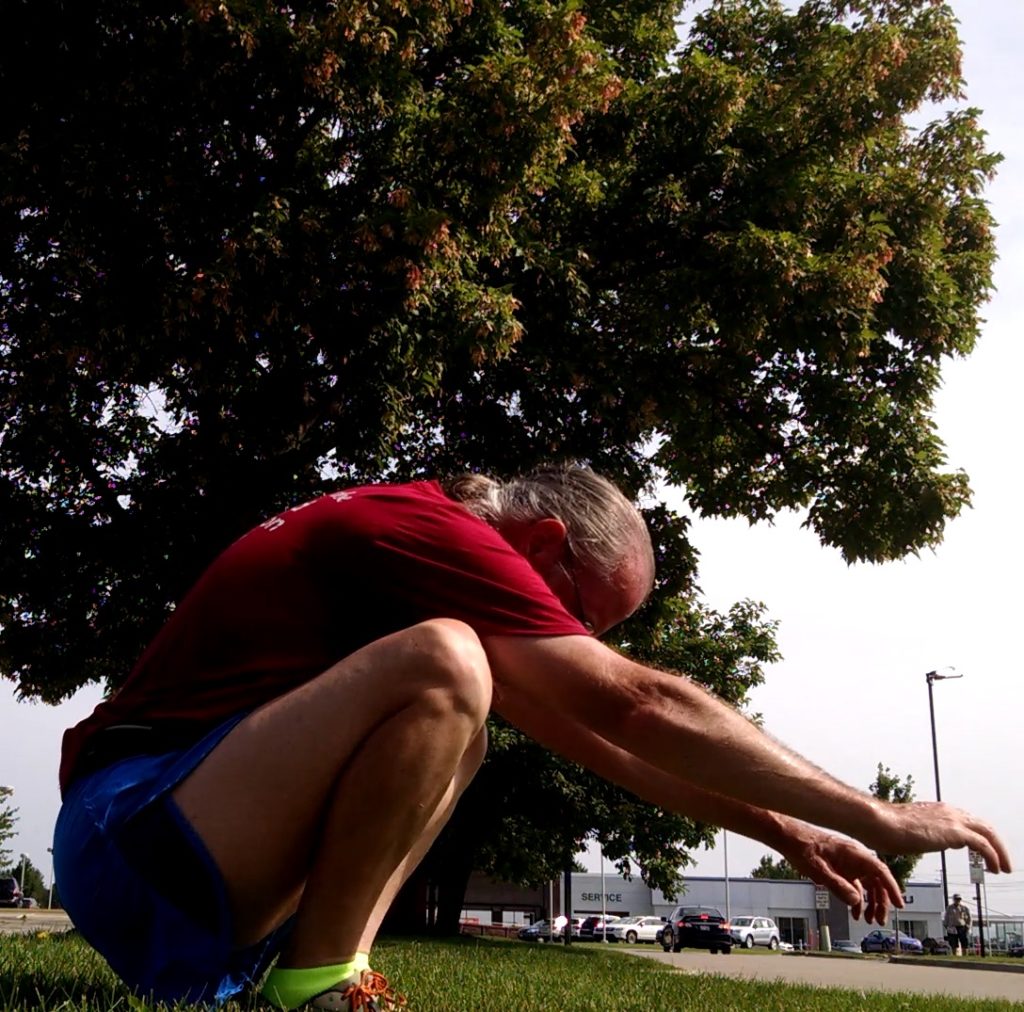
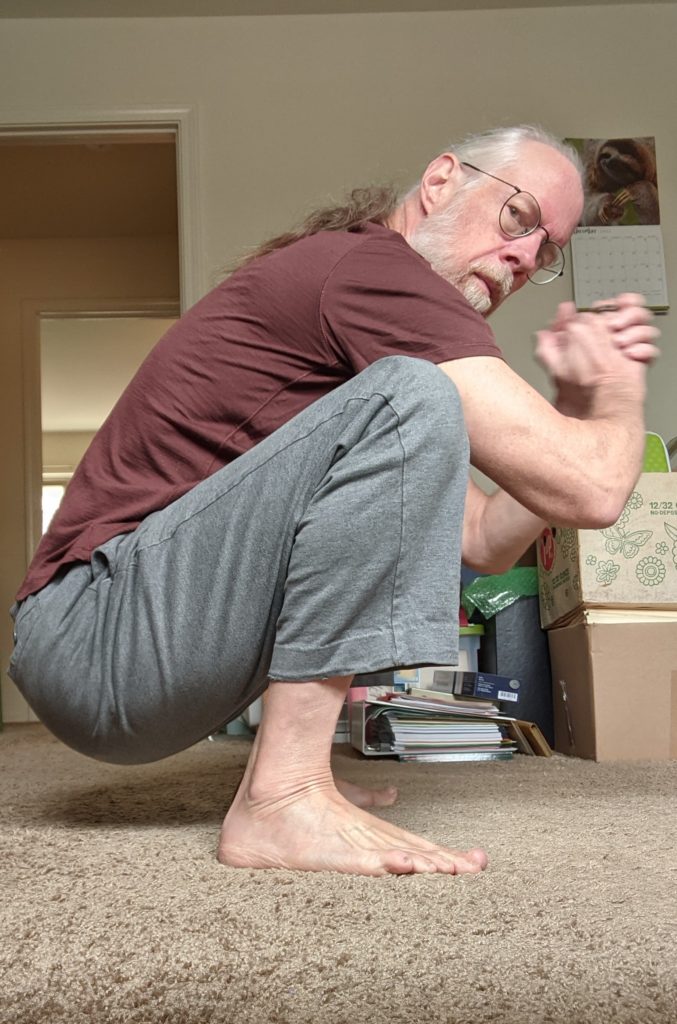
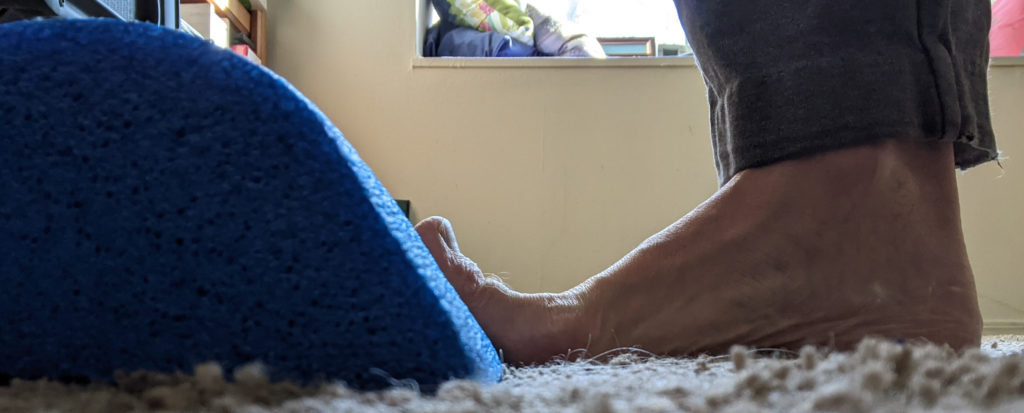
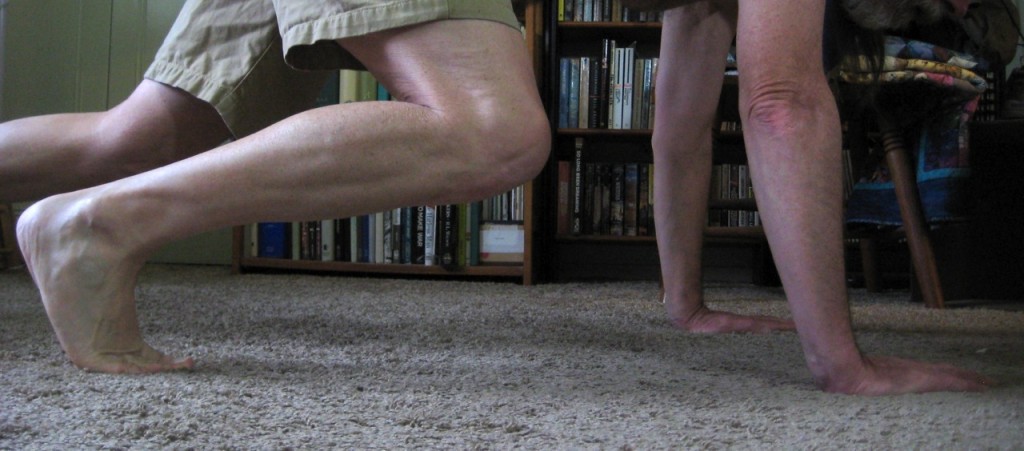
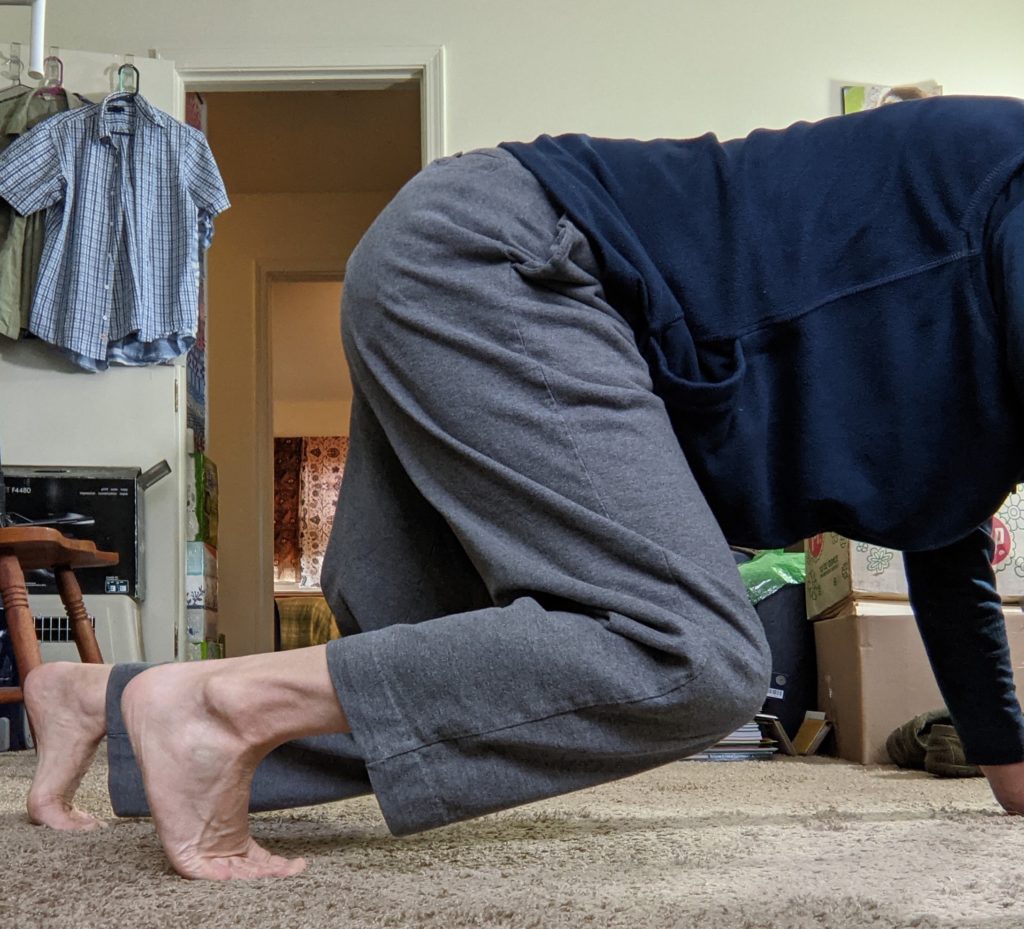
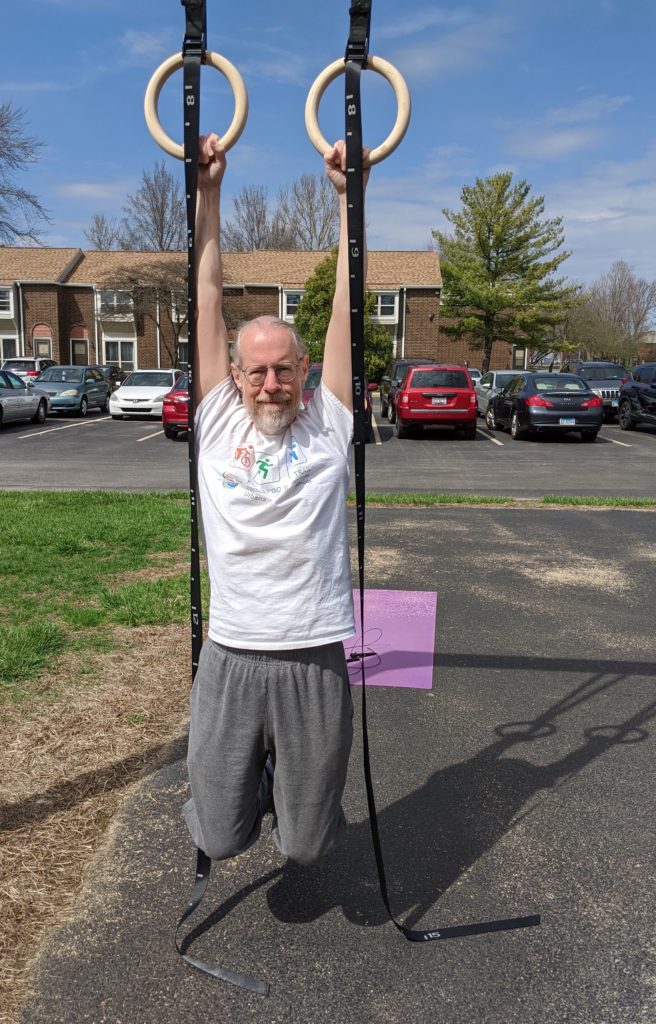
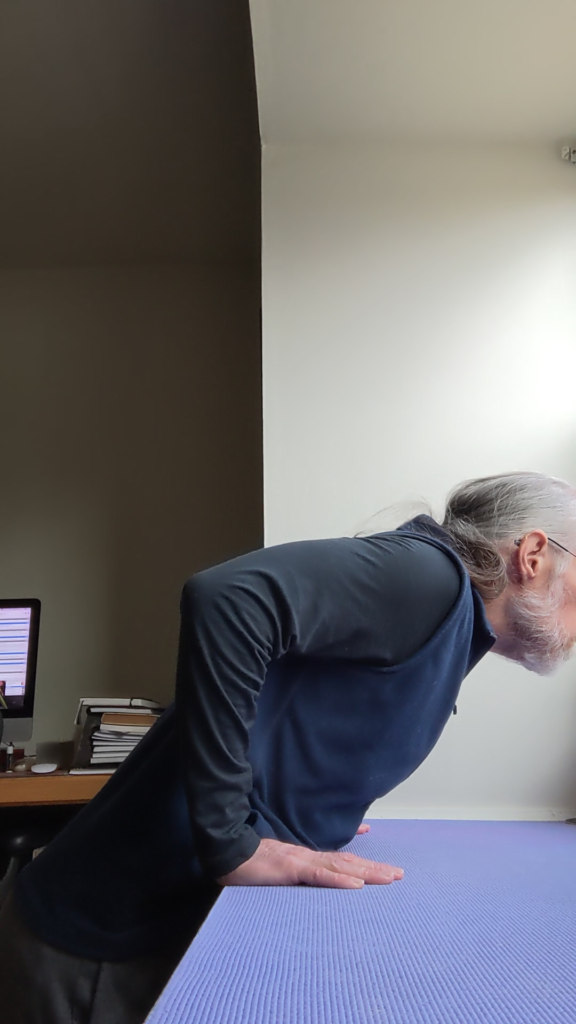
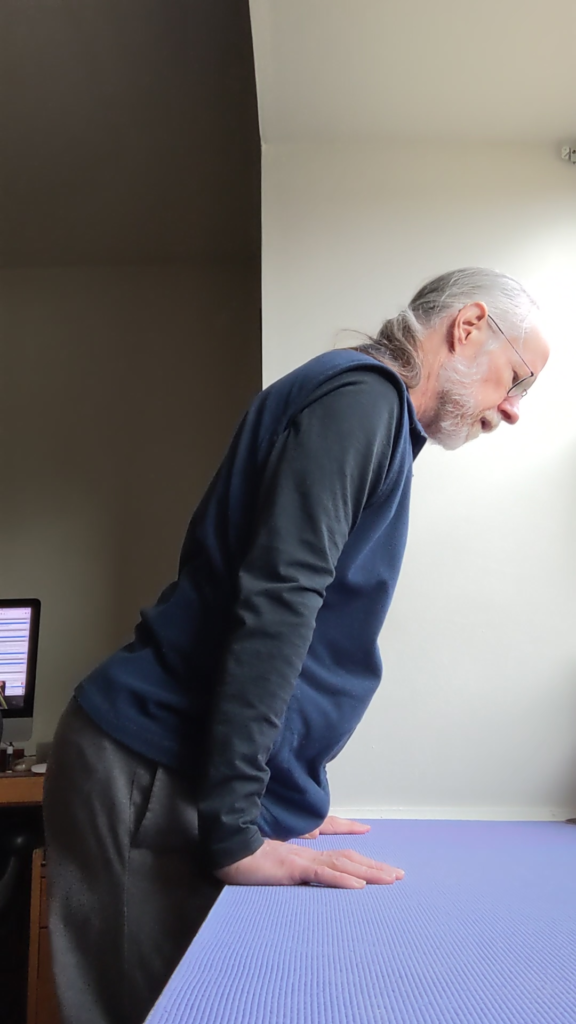
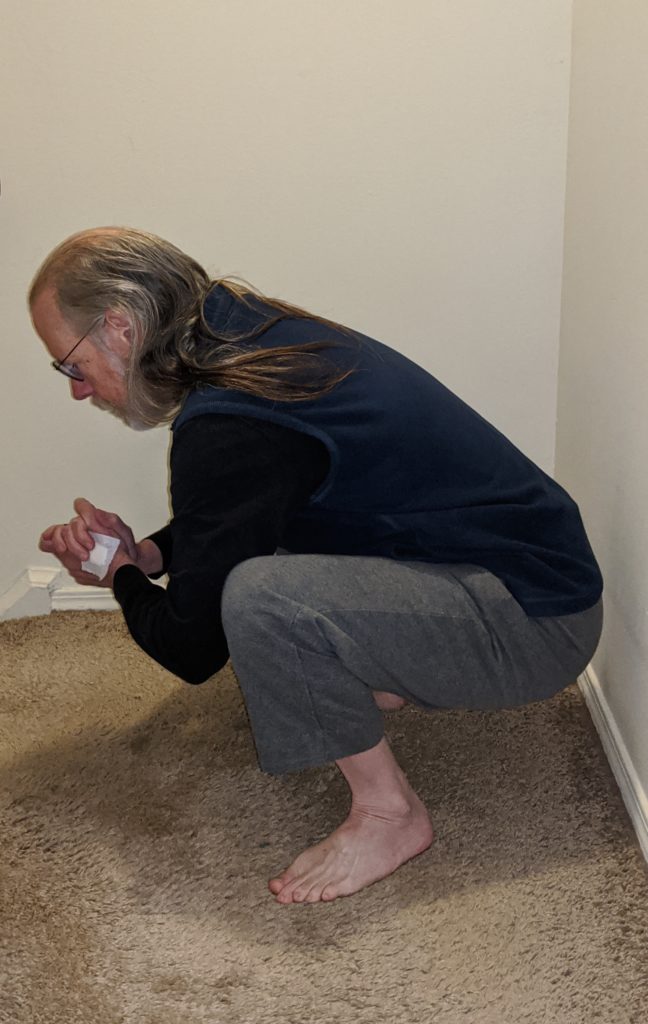 I’ve spent the past 5 years working to recover my ability to rest in a squat. Not quite there yet, but getting closer. (Photo by Jackie Brewer.)
I’ve spent the past 5 years working to recover my ability to rest in a squat. Not quite there yet, but getting closer. (Photo by Jackie Brewer.)